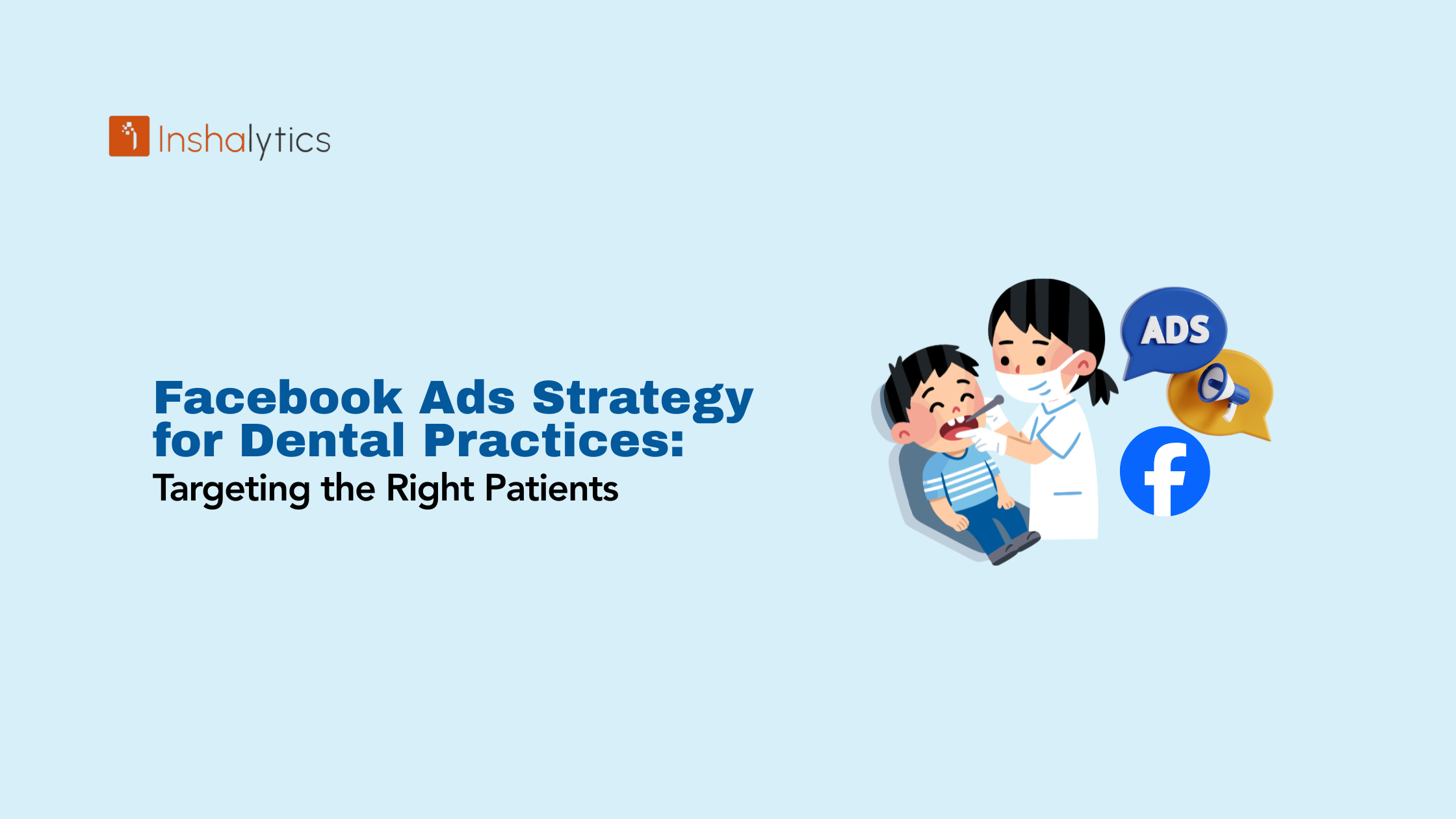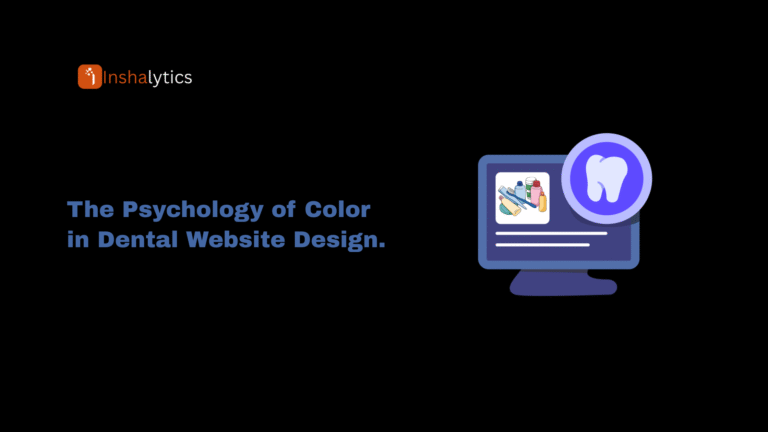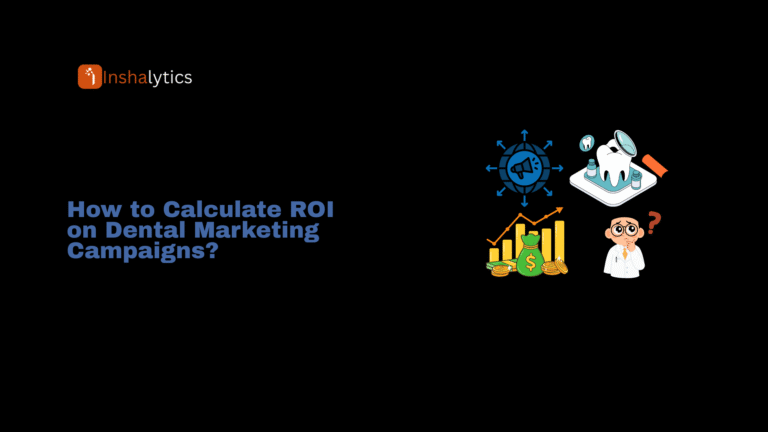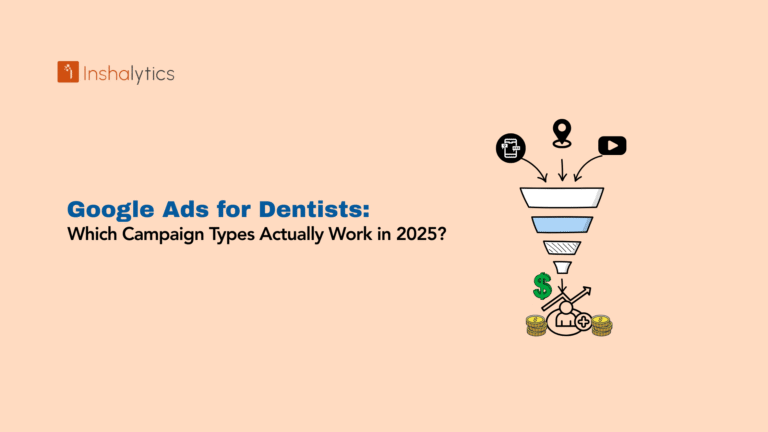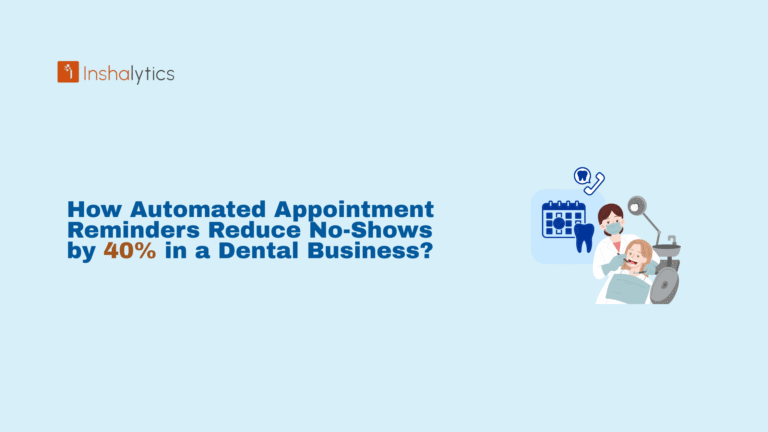Every month, countless potential patients in your area search for dental services on Facebook scrolling through their feeds during their morning coffee, lunch breaks, or evening downtime. Yet most dental practices struggle to capture their attention at these critical moments. The difference between a thriving practice with a fully booked schedule and one struggling to fill appointment slots often comes down to one thing: a strategic, well-executed Facebook advertising campaign.
With over three billion active users worldwide, Facebook isn’t just a social network it’s the largest, most sophisticated patient acquisition platform available to dental practices today. But here’s the challenge: simply running ads isn’t enough. The practices seeing real results those attracting 20, 50, or even 100+ new patients per month understand that success on Facebook requires precision targeting, compelling creative, and a data-driven approach that traditional dentist marketing never demanded.
This guide reveals the exact Facebook advertising strategies that top-performing dental practices use to fill their schedules with high-value patients while spending less than traditional marketing channels. Whether you’re a solo practitioner looking to grow your patient base or a multi-location practice seeking consistent lead flow, you’ll discover how to leverage Facebook’s powerful targeting tools to connect with the right patients at the right time.
Why Facebook Ads Work for Dental Practices?
Facebook advertising offers dental practices unprecedented opportunities to reach potential patients with surgical precision. Unlike traditional marketing methods that broadcast your message to everyone within a geographic area, Facebook allows you to target specific individuals based on their demographics, behaviors, and interests.
Cost-Effectiveness Compared to Traditional Marketing
The financial advantage of Facebook advertising becomes clear when compared to traditional channels. While radio spots, billboards, and newspaper ads can cost thousands of dollars with uncertain results, Facebook ads operate on a flexible budget model. Most dental practices see average costs between $0.26 to $0.30 per click and $1.01 to $3.00 per thousand impressions.
You can start with as little as $5 per day, test different approaches, and scale up only when you identify what works. This flexibility makes Facebook advertising accessible for both solo practitioners and large dental groups. Patient acquisition costs typically range from $25 to $75 per new patient, significantly lower than traditional marketing channels.
Precision Targeting Capabilities
Facebook’s targeting capabilities represent a paradigm shift in how dental practices can reach potential patients. The platform collects vast amounts of data on user behavior, interests, and demographics, allowing you to pinpoint your ideal patients with remarkable accuracy.
You can target parents of young children for pediatric services, adults aged 25-45 interested in cosmetic procedures, or recent movers to your area who need to find a new dentist. This precision eliminates wasted ad spend and ensures your marketing budget reaches people most likely to book appointments.
Measurable ROI and Performance Tracking
One of Facebook advertising’s greatest strengths is complete transparency in performance metrics. Through Facebook Ads Manager, you can track exactly how many people saw your ad, clicked through to your website, and converted into appointment bookings. This data-driven approach allows you to calculate your exact return on investment and make informed decisions about budget allocation.
Understanding Facebook Ad Targeting for Dentists
Success on Facebook starts with understanding the three core audience types available to dental practices. Each serves a distinct purpose in your overall marketing strategy and can be combined for maximum effectiveness.
Custom Audiences (Retargeting Past Patients)
Custom audiences allow you to upload your existing patient data email addresses, phone numbers, or website visitors and show ads specifically to these warm contacts. This is incredibly powerful for re-engaging patients who haven’t scheduled a cleaning in over six months or promoting new services to your existing patient base.
For example, if website visitors spent time reading your blog post about teeth whitening but didn’t book an appointment, you can retarget them with a special promotional offer. This strategy converts interested prospects into paying patients by staying top-of-mind when they’re ready to schedule.
Core Audiences (Demographics, Interests, Behaviors)
Core audiences represent broad targeting based on user characteristics. For dental practices, this typically includes demographic filters like age, gender, location, education level, and income. Location targeting is particularly crucial you want to ensure ads are shown only to people within a reasonable driving distance of your practice.
Interest targeting allows you to reach people based on pages they like and content they engage with. Target users interested in oral health, family wellness, or beauty and cosmetics for different service offerings. Behavioral targeting identifies people based on life events, such as recent movers who likely need a new dentist or parents of young children for pediatric services.
Lookalike Audiences (Finding Similar Patients)
Lookalike audiences leverage Facebook’s algorithm to find new potential patients who share characteristics with your best existing patients. You start by creating a custom audience of high-value patients those who’ve had cosmetic procedures, refer others frequently, or have high lifetime value.
Facebook then analyzes this group and identifies other users with similar demographics, interests, and online behaviors. This strategy dramatically improves campaign performance by focusing on audiences most likely to convert based on proven patterns.
Step-by-Step Guide to Creating Your First Dental Facebook Ad
Creating effective Facebook ads requires a systematic approach. Follow these steps to launch your first campaign with confidence.
Setting Up Facebook Business Manager
Before running ads, you need a Facebook Business Page dedicated to your dental practice. Navigate to Facebook’s Business Manager and create an account or log in with your existing profile. Once inside, access the Ads Manager dashboard where you’ll create and monitor all campaigns.
The Ads Manager interface may seem overwhelming initially, but it provides complete control over your advertising efforts. You’ll manage budgets, targeting options, ad creative, and performance metrics all from this central hub.
Choosing the Right Campaign Objective
Facebook offers multiple campaign objectives aligned with different marketing goals. For dental practices, the most effective objectives include:
Awareness campaigns introduce your practice to potential patients in your area who may not know you exist. These work well for new practices or when launching in a new location.
Traffic campaigns drive people to your website, particularly useful when you have valuable content or service pages you want prospects to explore.
Engagement campaigns encourage people to interact with your content through likes, comments, and shares, building social proof and brand familiarity.
Lead generation campaigns collect patient information directly within Facebook through lead forms, eliminating the need for website clicks and streamlining the appointment booking process.
Conversion campaigns optimize for specific actions like appointment bookings or form submissions on your website, requiring Facebook Pixel installation for tracking.
Defining Your Target Audience
Audience definition makes or breaks your campaign performance. Start by creating a customer persona that represents your ideal patient. Consider their age, family status, income level, location, and what dental services they’re most likely to need.
For pediatric dentistry, target parents with children under 12 within a 15-mile radius. For cosmetic procedures like veneers or Invisalign, focus on adults aged 25-55 with higher household incomes who’ve shown interest in beauty and wellness. Emergency dental services might target a broader age range but emphasize immediate availability and extended hours.
Use Facebook’s detailed targeting options to layer multiple criteria. Combine location targeting with interests and behaviors to create highly specific audience segments that align with your service offerings.
Setting Budget and Schedule
Budget flexibility is one of Facebook advertising’s greatest advantages. Start conservatively with $10-20 per day while testing different ad variations. Run tests for at least one week to gather meaningful performance data.
Once you identify winning ads, gradually increase budget allocation to successful campaigns while pausing underperformers. Most dental practices find that $30-50 per day generates consistent lead flow once campaigns are optimized.
Schedule your ads to run continuously or during specific hours when your target audience is most active. Many practices see better results running ads Monday through Friday during business hours when people can immediately call to schedule appointments.
Creating Compelling Ad Creative
Your ad creative—the images, videos, and copy people see—determines whether they stop scrolling or ignore your message entirely. High-performing dental ads typically feature:
Professional imagery showing your modern office, friendly staff, and advanced technology. Avoid stock photos that look generic and impersonal.
Before-and-after transformations for cosmetic procedures like teeth whitening, veneers, or orthodontics. These visual proof points are incredibly compelling for potential patients considering similar treatments.
Clear value propositions that immediately communicate what makes your practice different. Special offers, convenient hours, advanced technology, or exceptional patient care should be front and center.
Strong calls-to-action that tell people exactly what to do next. “Book Your Free Consultation,” “Schedule Online Today,” or “Call Now for Same-Day Appointments” create urgency and clarity.
Advanced Targeting Strategies for Dental Patient Acquisition
Once you’ve mastered the basics, these advanced strategies can significantly improve campaign performance and patient quality.
Geographic Targeting for Local Practices
Dental services require patients to physically visit your office, making geographic targeting absolutely critical. Create a radius around your practice location typically 5 to 15 miles, depending on whether you’re in an urban or suburban area.
For multi-location practices, create separate campaigns for each office with location-specific targeting. This ensures your ad spend reaches people who can realistically become patients rather than those who are too far away to visit regularly.
Consider excluding areas where you have low market penetration or where competitors dominate. Focus your budget on neighborhoods with favorable demographics and lower competition.
Behavioral Targeting (New Movers, Parents)
Facebook’s behavioral targeting options provide powerful ways to reach people at moments when they need dental services. New movers to your area represent prime opportunities they’re actively searching for new service providers, including dentists.
Parents represent another valuable behavioral segment, especially for pediatric or family dentistry. Target people whose profiles indicate they have children in specific age ranges, as these families prioritize regular dental care and often seek practices that serve the entire family.
Interest-Based Targeting for Specific Services
Different dental services appeal to different interest groups. Align your targeting with the services you’re promoting:
For cosmetic dentistry, target users are interested in beauty, fashion, weddings, and personal appearance. These individuals are more likely to invest in smile makeovers, whitening, and veneers.
For orthodontics and Invisalign, target adults interested in self-improvement and professional development, as they often seek discreet teeth straightening options.
For preventive care, target health-conscious users interested in wellness, fitness, and healthy living, as these individuals tend to prioritize regular dental checkups.
Competitor Audience Targeting
While ethically sensitive, targeting people who follow or engage with competing dental practices can be an effective strategy. Identify successful practices in your area and create campaigns targeting their Facebook followers.
Focus on differentiating your practice rather than making negative comparisons. Highlight your unique advantages—extended hours, advanced technology, specialized services, or exceptional patient reviews. Offer incentives like free consultations or new patient discounts to encourage switching.
Best-Performing Ad Types for Dental Practices
Different ad formats serve different purposes in your marketing funnel. Understanding when to use each type maximizes campaign effectiveness.
Lead Generation Ads
Lead generation ads keep users on Facebook rather than sending them to your website. These ads feature built-in forms where people can submit their contact information with just a few taps. For busy mobile users, this frictionless experience significantly increases conversion rates.
Use lead generation ads to promote free consultations, new patient specials, or downloadable resources like oral health guides. Follow up quickly with leads ideally within one hour while their interest is highest.
Video Ads for Patient Education
Video content generates higher engagement rates than static images. Create short educational videos explaining common procedures, introducing your team, or showcasing your office environment. Videos humanize your practice and build trust before potential patients even visit.
Keep videos under 60 seconds for optimal performance. Include captions since many users watch with sound off. End with a clear call-to-action directing viewers to book an appointment or learn more.
Carousel Ads for Multiple Services
Carousel ads allow you to showcase multiple services or locations within a single ad unit. Each carousel card can feature different images, headlines, and links, making them ideal for practices offering diverse services.
Use carousel ads to highlight different treatment options, showcase various team members, or display before-and-after results from multiple procedures. This format encourages interaction and provides more information without overwhelming viewers.
Before-and-After Image Ads
For cosmetic dentistry, before-and-after transformations are your most powerful marketing asset. These visual testimonials provide concrete proof of your skills and the results patients can expect.
Ensure you have proper patient consent before using their images. Follow HIPAA guidelines and avoid including identifying information. Pair before-and-after images with patient testimonials when possible to create emotionally compelling ads.
Facebook Ad Budget and Bidding Strategies
Effective budget management ensures you maximize returns while controlling costs. These strategies help you allocate resources wisely.
Starting Budget Recommendations
Begin with a testing budget of $300-500 per month ($10-15 per day) spread across 3-5 different ad variations. This budget allows you to gather meaningful data about what resonates with your audience without overspending on unproven campaigns.
After identifying winning ads through one to two weeks of testing, increase daily budgets by 20-30% increments on top performers while pausing or eliminating poor performers. Most established campaigns run profitably at $30-75 per day once optimized.
Cost Per Click (CPC) Benchmarks
Understanding typical costs helps you evaluate campaign performance. Dental practices typically see CPCs between $0.25 and $2.00, depending on competition in your market and targeting specificity. Urban markets with many competing practices tend toward the higher end, while suburban and rural areas often see lower costs.
If your CPC exceeds $3.00 consistently, your targeting may be too narrow, your ad creative may need improvement, or you’re bidding on highly competitive audiences. Adjust one variable at a time to identify the issue.
Cost Per Acquisition (CPA) for Dental Leads
Your ultimate metric is cost per acquisition how much you spend to gain one new patient. Successful dental practices typically see CPAs between $25 and $150, depending on the service being promoted. Preventive care and cleaning appointments tend toward the lower end, while high-value services like implants or full mouth reconstructions justify higher acquisition costs.
Calculate your patient lifetime value to determine acceptable acquisition costs. If the average patient generates $2,000 in revenue over their relationship with your practice, spending $100 to acquire them delivers excellent ROI.
A/B Testing on Small Budgets
Even with limited budgets, systematic testing improves results over time. Create multiple ad variations, testing one element at a time different images, headlines, or calls-to-action. Run tests for at least 5-7 days or until each ad receives at least 100 impressions.
Analyze which variations generate the highest click-through rates and lowest cost per lead. Scale winning variations and create new tests based on what you’ve learned. This iterative approach continuously improves campaign performance without requiring large budgets.
Measuring Success: Key Metrics to Track
Data-driven decision-making separates successful campaigns from wasted budget. Track these critical metrics to optimize performance.
Conversion Rate Optimization
Your conversion rate the percentage of ad clicks that result in appointment bookings reveals how effectively your ads and landing pages work together. Dental practices should aim for conversion rates between 5% and 15% for lead generation campaigns.
Low conversion rates indicate friction in your booking process. Simplify forms, reduce required fields, add trust signals like reviews and credentials, and ensure mobile optimization. Small improvements in conversion rate dramatically impact overall campaign profitability.
Return on Ad Spend (ROAS)
ROAS measures revenue generated for every dollar spent on advertising. Calculate ROAS by dividing total revenue from Facebook-acquired patients by your total ad spend. A 3:1 ROAS means you generate $3 in revenue for every $1 spent on ads.
Most successful dental practices achieve ROAS between 3:1 and 10:1, depending on services promoted and market conditions. Track ROAS by campaign to identify your most profitable initiatives and allocate budget accordingly.
Appointment Booking Rate
Monitor how many leads actually book appointments. Even with high-quality leads, booking rates vary based on follow-up speed and process efficiency. Contact leads within one hour when possible—response time dramatically affects conversion.
Track booking rates separately for different services and campaigns. This granular data reveals which promotions attract the most qualified leads versus which generate interest but low follow-through.
Common Facebook Ad Mistakes Dental Practices Make
Avoid these pitfalls that drain budgets and undermine campaign effectiveness.
Targeting Too Broad an Audience
Casting too wide a net wastes budget on people unlikely to become patients. A 50-mile radius around your practice reaches thousands of people who will never drive that far for dental care. Narrow your targeting to realistic service areas and relevant demographics.
Overly broad targeting also dilutes your messaging. Specific audiences respond to specific value propositions. Create separate campaigns for different patient personas rather than one generic campaign trying to appeal to everyone.
Neglecting Mobile Optimization
Over 80% of Facebook users access the platform via mobile devices. If your ads, landing pages, or booking process don’t work flawlessly on smartphones, you’re losing the majority of potential patients.
Test your entire patient journey on mobile devices. Ensure forms are easy to complete with large touch targets, page loads quickly even on cellular connections, and phone numbers are clickable to enable instant calling.
Poor Landing Page Experience
Sending ad traffic to your generic homepage rather than dedicated landing pages kills conversions. Create specific landing pages that continue the conversation started in your ad, featuring the same service, offer, and visual style.
Effective landing pages include clear headlines matching your ad promise, prominent calls-to-action, social proof through reviews and testimonials, and simple forms or contact methods. Remove navigation menus and other distractions that provide exit routes before conversion.
Inconsistent Ad Testing
Running a single ad variation without testing alternatives leaves money on the table. Small changes in images, headlines, or offers can double or triple performance. Develop a testing culture where you’re always running experiments to improve results.
However, avoid changing too many variables simultaneously or stopping tests prematurely. Give each test adequate time and data to produce reliable results, then implement winners and create new tests.
Taking Action: Your Facebook Advertising Roadmap
Success with Facebook advertising doesn’t happen overnight, but following a systematic approach delivers consistent results. Start by creating your Business Manager account and installing Facebook Pixel on your website to track conversions. Develop 3-5 customer personas representing your ideal patients for different services.
Launch small-budget campaigns testing different targeting approaches, ad formats, and messaging. Monitor performance daily during the first week, then adjust based on data. Scale successful campaigns gradually while cutting underperformers quickly.
Remember that Facebook advertising is a skill that improves with practice and iteration. The practices that see the best results commit to continuous testing, learning, and optimization rather than expecting immediate perfection.
With the right strategy, consistent execution, and data-driven optimization, Facebook advertising can become your most reliable source of new patients filling your schedule with the exact types of patients you want to serve while spending less than traditional marketing channels ever allowed.
